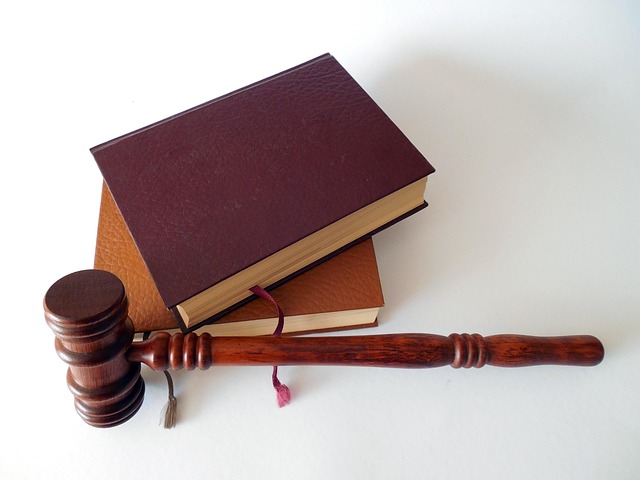Strategic litigation is a powerful tool for businesses to navigate complex legal landscapes and contentious partnership disputes. By carefully selecting legal actions, companies can resolve current issues, set precedents, and establish long-term solutions to protect their interests. This approach safeguards proprietary information, enforces agreements, seeks damages, and deters future misconduct. After resolving a partnership dispute through litigation, businesses should focus on rebuilding trust, enhancing internal processes, restructuring policies, and implementing robust legal protections for sustained growth.
Strategic litigation—a powerful tool for businesses aiming to safeguard their interests. This legal strategy, often underutilized, plays a pivotal role in resolving partnership disputes and securing long-term success. When a partnership faces internal conflicts or external threats, strategic litigation can be a game-changer.
This article explores the art of navigating complex legal landscapes, delving into when and how to employ this tactic effectively, and offering insights into rebuilding post-dispute, ensuring resilience and protection for business interests.
- Understanding Strategic Litigation: A Tool for Business
- When is Strategic Litigation Appropriate in Partnership Disputes?
- Key Components of a Successful Strategic Litigation Strategy
- Post-Litigation: Rebuilding and Protecting Interests After a Partnership Dispute
Understanding Strategic Litigation: A Tool for Business

Strategic litigation is a powerful tool businesses employ to protect their interests, often in the face of complex legal landscapes and contentious partnerships. It involves carefully selecting and pursuing legal actions that not only address immediate issues but also serve as strategic deterrents or long-term solutions to potential threats. This proactive approach can be instrumental in resolving partnership disputes, ensuring business continuity, and shaping future interactions.
When a business faces a dispute with partners or third parties, strategic litigation offers a means to navigate legal complexities effectively. By presenting compelling arguments and evidence, businesses can not only win current cases but also set precedents that strengthen their position in similar future scenarios. This method allows companies to safeguard their rights, maintain control over operations, and foster healthier business relationships by establishing clear boundaries and expectations.
When is Strategic Litigation Appropriate in Partnership Disputes?

Strategic litigation can be a powerful tool in navigating partnership disputes, where businesses seek to protect their interests and maintain control. It is particularly appropriate when a partnership faces significant disagreements or breaches of contractual agreements. For instance, if one partner is allegedly misusing company assets, violating intellectual property rights, or engaging in dishonest practices, strategic litigation offers a means to address these issues. By carefully constructing legal arguments and presenting compelling evidence, businesses can safeguard their proprietary information, enforce contractual terms, and seek damages for any resulting losses.
In partnership disputes, strategic litigation allows companies to assert their rights, deter further misconduct, and potentially set a precedent for future conflicts. It encourages partners to adhere to agreed-upon terms and fosters a culture of accountability. This approach can be especially valuable when negotiation or mediation fails to resolve the dispute amicably, providing a structured legal framework to safeguard the business’s interests and ensure a fair resolution.
Key Components of a Successful Strategic Litigation Strategy

A successful strategic litigation strategy for protecting business interests begins with a thorough understanding of the key components involved. Firstly, identifying the core issues and objectives is paramount. This includes clarifying the specific legal claims, assessing potential damages, and defining the desired outcome. In cases of partnership disputes, where relationships are often complex, a clear strategy can help navigate the challenges, ensuring that all parties’ interests are considered.
Additionally, building a robust case requires comprehensive evidence gathering. This involves documenting relevant facts, securing expert opinions, and compiling legal precedents that support the claims. For instance, in partnership disputes, demonstrating breach of fiduciary duty or unfair practices through solid documentation can significantly strengthen the litigation strategy. Effective communication with all stakeholders is another critical aspect, ensuring everyone involved understands their roles and the potential implications.
Post-Litigation: Rebuilding and Protecting Interests After a Partnership Dispute

After successfully navigating a partnership dispute through strategic litigation, businesses must focus on rebuilding and fortifying their interests to prevent future conflicts. This phase involves careful planning and implementation to ensure the company’s long-term sustainability and growth. One key step is reassessing and restructuring internal processes, policies, and governance structures to address the root causes of the dispute.
Businesses should also consider enhancing legal protections by reviewing and updating contracts, implementing robust non-disclosure agreements (NDAs), and establishing clear guidelines for future partnerships. Rebuilding trust among stakeholders, including employees, investors, and partners, is vital. Effective communication strategies, transparency, and demonstrating a commitment to ethical business practices can help restore faith in the company’s leadership and decision-making processes.
Strategic litigation is a powerful tool for businesses navigating partnership disputes, enabling them to protect their interests and pursue justice. By understanding when and how to employ this strategy, companies can effectively resolve conflicts, safeguard their reputation, and emerge stronger. Key components include thorough planning, clear legal justification, and a well-executed plan that considers both short-term gains and long-term protection. Following litigation, rebuilding efforts must focus on reinforcing relationships, enhancing communication, and implementing robust safeguards to prevent future partnership disputes.
